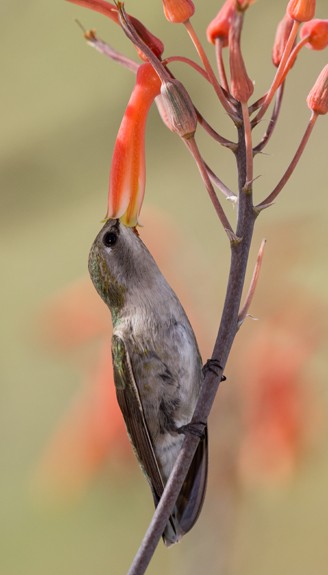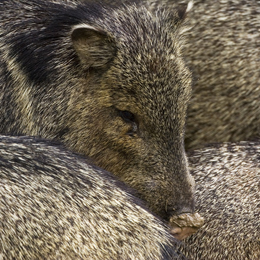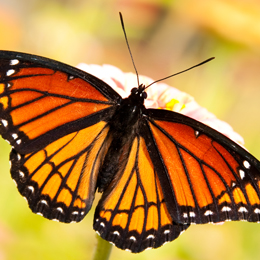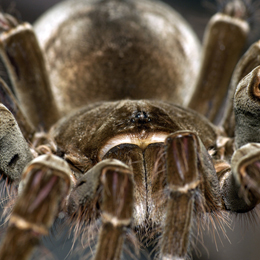Description
Black-chinned hummingbirds are also known as Alexander hummingbirds. The bird was named after Dr. Alexandre, a French physician, who was the first to discover this species of hummingbird in Mexico. Males have a black head and chin, with a thin deep purple collar on the neck. The name black-chinned hummingbird is, therefore, more commonly used to mention this species.
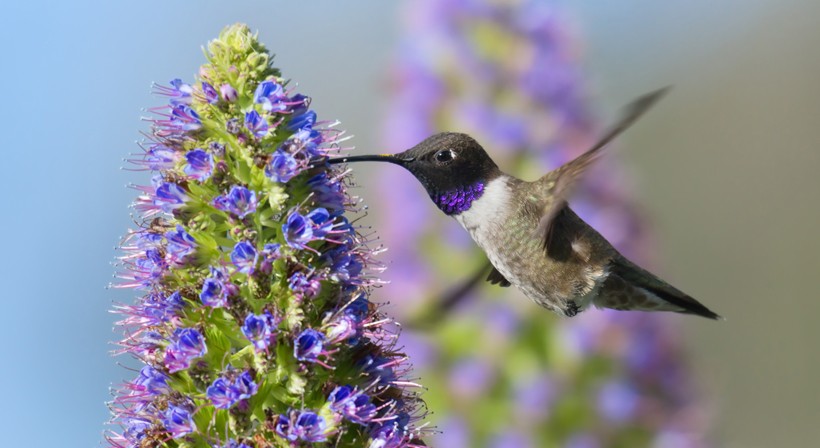
Male black-chinned hummingbird feeding on a Pride of Madeira flower
?
Image credits: sumikophoto/Shutterstock
Male and female black-chinned hummingbirds are easily distinguishable due to their obvious physical differences. Both males and females have a metallic green shade on the dorsal part and white feathers below, but the males are slightly smaller than the females. They have, in contrast to the female, a black head and a purple lining on the neck, whereas the females just have the same metallic green and white color coat throughout the body. The difference in the tail is also easily visible; the females have rounded tails and the males possess forked tail feathers.
Black-chinned hummingbirds are small-sized hummingbirds, with their length ranging from 8 to 8.5 centimeters. They weigh around 3 to 3.5 grams and can have a lifespan of up to 10 years, which is remarkably longer compared to other birds of similar size. The senses of hummingbirds are different from human senses. These tiny birds have an acute sense of hearing. They also can detect ultraviolet light, which is impossible for humans. A unique feature is their thin and long beak, which enables the hummingbird to reach the base of flowers for nectar. The tongue has several tiny grooves; when the bird extends its tongue into the base of the flower, these grooves are filled with plant nectar, thus allowing the bird to feed.
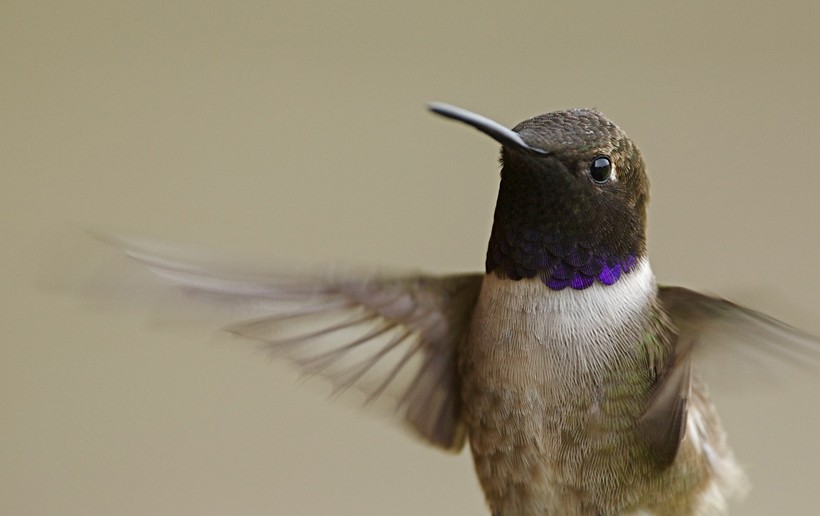
The hummingbird has a heartbeat of approximately 1,260 p/m in flight and up to 480 in rest.
?
Image credits: Tom Reichner/Shutterstock
Physically, the black-chinned hummingbird is a small-sized engine that keeps running throughout its lifespan. Its heart beats approximately 1,260 times every minute in flight and up to 480 times in rest. On cold nights their heartbeat drops to 45 – 180 beats per minute (torpor mode). This rapid heart rate allows the bird to achieve a very graceful flight; the wings flutter over 70 times per second, generating a humming sound when they fly. The highly rich plant nectar is the only food source in the wild that can support such a rapid metabolic rate. Therefore, just like all hummingbirds, the black-chinned hummingbirds also depend largely on plant nectar.
There are no records of any existing subspecies of the black-chinned hummingbird though they are known to hybridize with Costa's and Anna's hummingbirds.
Habitat, Diet & Predators
Black-chinned hummingbirds prefer mountains, woodlands, meadows, shrublands and orchards, due to the rich availability of flowering plants in such habitats. Hummingbirds have to keep feeding constantly in order to support their rapid metabolic rate. The body’s energy consumption rate is so high that a black-chinned hummingbird can starve to death in a matter of hours if it does not feed. Due to this reason, the hummingbird perches longer times and saves energy as much as possible.
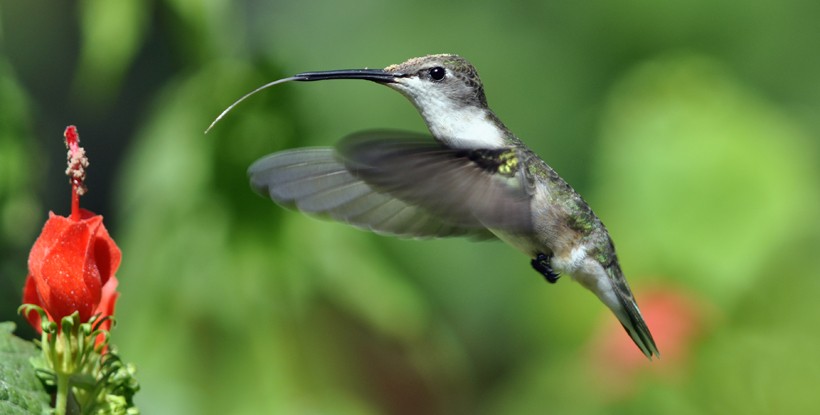
Female black-chinned hummingbird, tongue ready to feed on the flowers
?
Image credits: Laura Mountainspring/Shutterstock
They spend most of the day in search of plant nectar. However, at times, the black-chinned hummingbirds can also feed on small insects. This hunting behavior is quite common among the females, especially when they have to feed the young ones too.

Female hummingbird hovering to huge sun flower
?
Image credits: Steve Bower/Shutterstock
Their acrobatic flight abilities allow them to evade most of the predators that share its habitat. However, quick predators like snakes, cats, foxes and roadrunners can kill these hummingbirds if they hover close enough. Black-chinned hummingbirds are very focused on their search for food and they often overlook well-camouflaged predators. Due to this, they become easy prey for predators like snakes and other reptiles.
Reproduction and Life Cycle
The breeding season starts in April and lasts until September. The female black-chinned hummingbird builds her nest before finding a mate. The construction of this nest can take up to 3 days. The female gathers twigs, plant fibers, animal hairs and spider webbings to construct a comfortable nest for its young ones. The nest is approximately 3 to 4 centimeters in diameter, and can stretch to double that size as the young ones grow larger. Once the construction is complete, the female leaves the nesting site to find a mate.
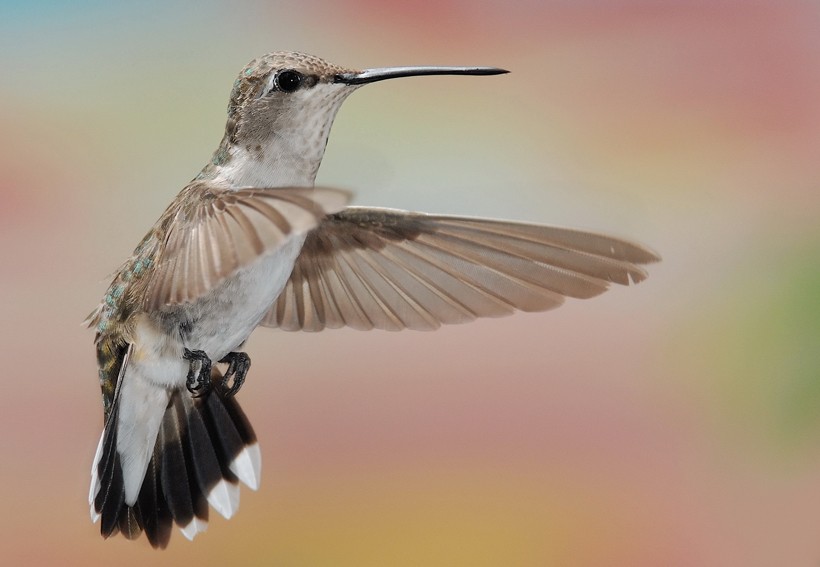
The female gathers twigs, plant fibers, animal hairs and spider webbings to construct the nest
?
Image credits: Takahashi Photography/Shutterstock
When the male finds a female during the breeding season, it displays a wide range of airborne acrobatics to impress the female. The male hummingbird flies back and forth in an ‘U’ shape, moving in closer and farther away from the female. As a courtship display, the male repeatedly rises to a height of up to 30 meters and then dives back towards the female at great speeds. The males can also be heard using different sounds during the courtship display, before finally mating with its partner. After mating, the female returns back to her nest while the males continues searching other females.
The female lays up to two pale white eggs that are approximately 1 cm in length and up to 7 mm in width. The chicks hatch after an incubation period of 12 to 16 days. The female black-chinned hummingbird manages all the parental activities on her own. She feeds the young, protects them and also maintaining the nest in good condition. All at a heart rate of more than thousand beats per minute. The small eggs and the newborn chicks are highly vulnerable to predation. Snakes, other reptiles, and small insect-eating birds frequently raid black-chinned hummingbird’s nests for an easy meal. The mother, with no weapons in her arsenal, can only try to distract the predator from reaching her nest.
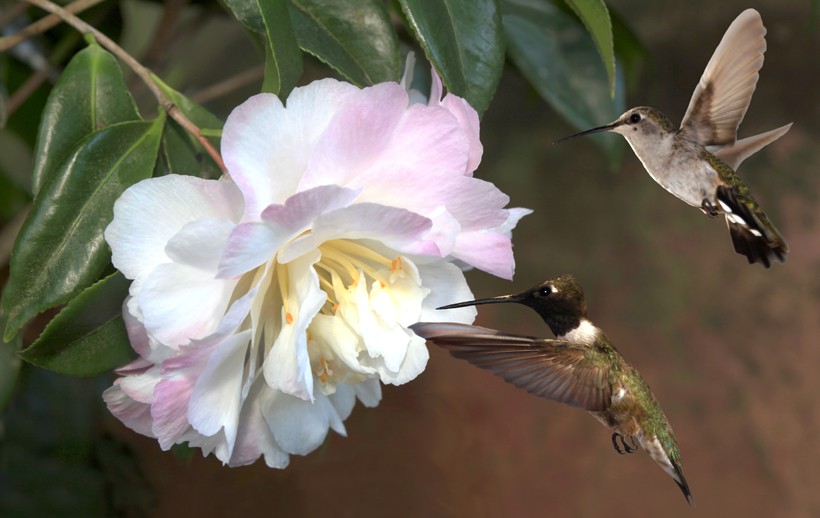
Male and female black-chinned hummingbird pair, Camellia Blossom
?
Image credits: Steve Bower/Shutterstock
The young ones mature during the first year and are ready to mate by the next breeding season. They are born featherless, but the first set of feathers are developed completely within the first three weeks from hatching. The juveniles are larger than their parents and their size gradually decreases as they grow into adults. The black-chinned hummingbirds are known to form natural hybrids with other species of hummingbirds. Hybrids with Anna’s and Costa’s have been spotted over the course of time. The hybrid between Anna’s hummingbird and the Black-chinned hummingbird was named Trochilus violajugulum or violet-throated hummingbird. Researchers and bird-watchers often find it quite difficult to identify the hybrids of black-chinned hummingbirds as the offspring shares mixed characteristics of both the parent species.
Behavior and Communication
Black-chinned hummingbirds are completely solitary in behavior. Pairs can be seen only during the breeding season and they separate soon after mating. Male black-chinned hummingbirds are highly territorial and do not allow rival males in their neighborhood. Black-chinned hummingbirds are also known to return to their favorite perch. They perch on branches for several minutes in order to survey its territory and relax.
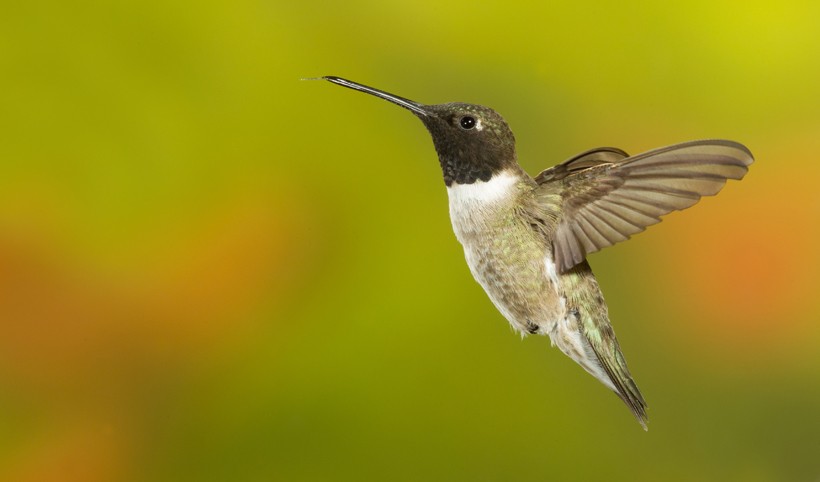
Black-chinned hummingbirds are a solitary, diurnal species
?
Image credits: Dennis W. Donohue/Shutterstock
Black-chinned hummingbirds are diurnal birds and are most active during daytime. They use a wide range of vocal sounds and flying patterns to communicate with other individuals. Based on these behavioral characteristics, it is clear that the black-chinned hummingbirds are quite intelligent for a bird of its size.
Population, Distribution and Conservation
Black-chinned hummingbirds are found commonly in western North America, Canada, and Mexico. These hummingbirds are known to migrate; the black-chinned hummingbird migration takes place between British Columbia and Mexico, according to the seasonal changes. They spend winter time in Mexico and travel north during summer. The black-chinned hummingbird population increases in Canada in May and return back to Mexico during June and July. Due to this vast range of distribution, the black-chinned hummingbirds find numerous opportunities to flourish. The Black-chinned hummingbird range is widespread in an area of 236,000 square km, including several types of habitats.
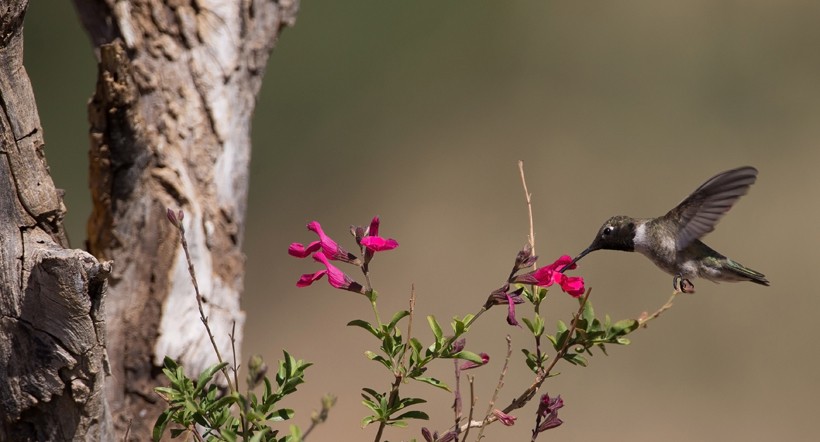
Black-chinned hummingbirds are found commonly in western North America, Canada, and Mexico.
?
Image credits: Dennis W. Donohue/Shutterstock
These hummingbirds experience a 14.6% increase in their population per decade, which is remarkably good. Hummingbird feeders and gardens are highly responsible for this growth of the Black-chinned hummingbird population. Due to a rising popularity of hummingbirds, more and more people are now interested in building feeders and flowering gardens for these birds. Considering the increase in population and favorable conditions for survival of black-chinned hummingbirds, the IUCN lists this species as “Least Concern”.
Evolution
Hummingbirds are one of the most rapidly evolving birds in the world. Researchers believe that all the 338 different species of hummingbirds evolved from one ancestor, all of them within the last 25 million years. Eocypselus rowei, an extinct bird of the Eocene period, is considered to be the common ancestor of all hummingbirds.
A well-preserved fossil of Eocypselus rowei, discovered at the Green River Formation of Wyoming, provided valuable clues about the evolution of Hummingbirds. This small bird, approximately 5 inches in length, displayed physical characteristics similar to modern hummingbirds and swifts, thus indicating that Eocypselus rowei could be the common ancestor of these modern birds. Researchers believe that the swifts were the first to evolve from Eocypselus rowei; approximately 42 million years ago, the hummingbirds split from insectivorous swifts and tree swifts and changed their diet towards plant nectar.
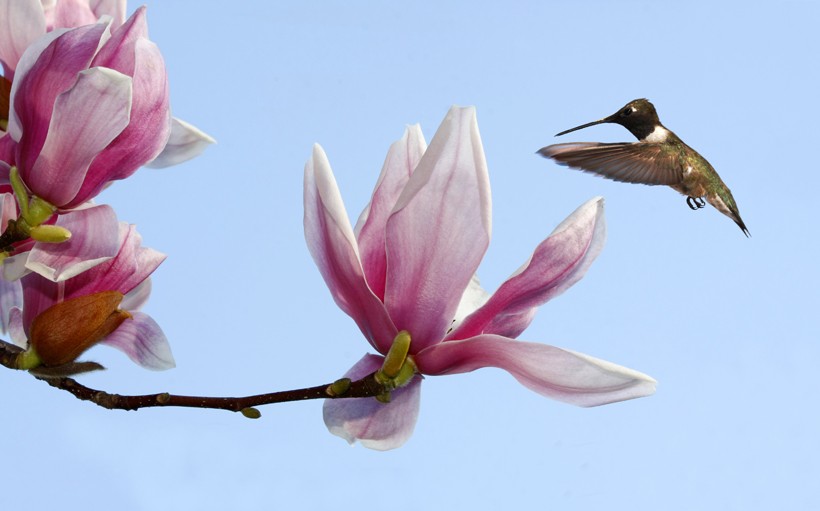
Black-chinned hummingbird inspecting the tulip tree blossom
?
Image credits: Steve Bower/Shutterstock
There are 338 species of hummingbirds in the wild, and researchers conclude that many species are still rapidly evolving to form completely new species. It is also speculated that a fast metabolism can be one of the primary factors allowing the bird to evolve at such a rapid rate. Early hummingbirds evolved in Eurasia. Approximately 22 million years ago the hummingbirds invaded South America. They rapidly diversified into approximately 140 different species and inhabited various habitats of the continent. They continued forming new species and, approximately 12 million years ago, they migrated to North America and the Caribbean. Later on, black-chinned hummingbirds and all other North American hummingbirds, evolved according to the climate and availability of food in the newly conquered continent.
Funfacts
- Black-chinned hummingbirds measure only 8 cm and weigh around 3 to 3.5 grams.
- They are sexually dimorphic birds, which means males and females have distinct physical appearances.
- Black-chinned hummingbirds migrate according to climate seasoning; they leave western North America and move to warmer lands to survive winter time.
- Though their flight is quite popular, black-chinned hummingbirds spend more time perching on branches.
- Black-chinned hummingbirds have a very rapid metabolic mechanism; their heart beats up to 1260 times every minute and they take up to 480 breaths per minute, when at rest.
- Black-chinned hummingbirds can survive for approximately 10 years under favorable conditions.
